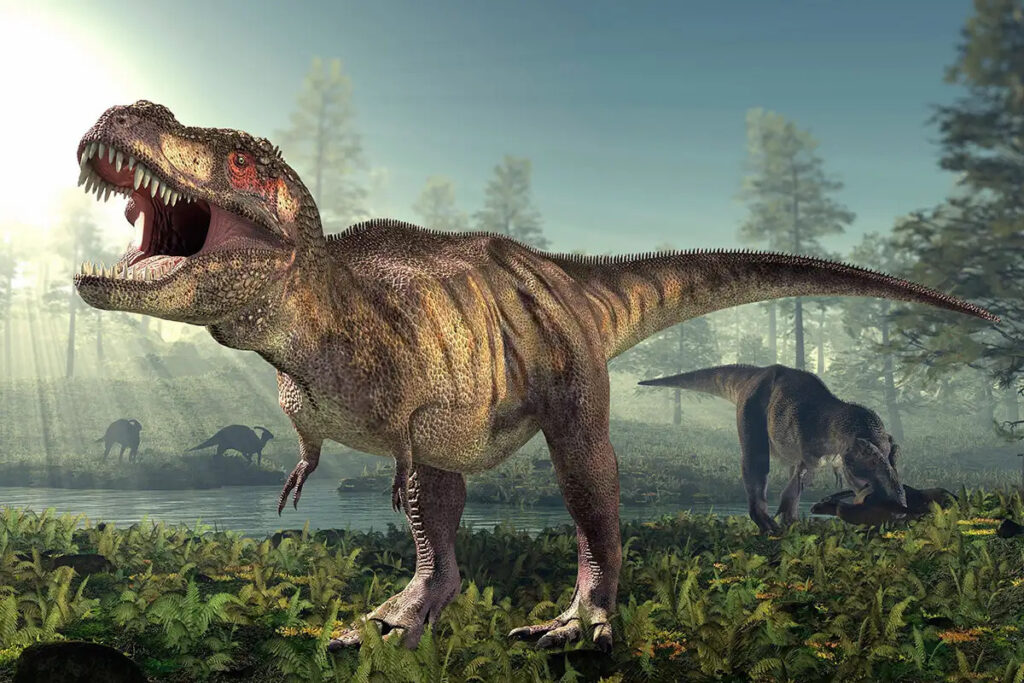Introduction
Dinosaurs have always fascinated children, and preschoolers are no exception. Among the many types of dinosaurs, carnivorous ones like Tyrannosaurus Rex and Velociraptor hold a special place in their imaginations.
But how do you introduce these mighty creatures to young children without overwhelming them? In this article, we’ll explore engaging and age-appropriate ways to describe carnivore dinosaurs to preschoolers.
The World of Dinosaurs
What Are Dinosaurs?
Before diving into carnivores, it’s crucial to introduce the concept of dinosaurs. Start by explaining that dinosaurs were massive creatures that lived millions of years ago. Use simple language and perhaps even compare them to big animals today, like elephants.
Types of Dinosaurs
Briefly discuss the various types of dinosaurs, such as herbivores and carnivores. This sets the stage for focusing on carnivorous dinosaurs.
Carnivore Dinosaurs
What Does ‘Carnivore’ Mean?
Define the term ‘carnivore’ in a way that preschoolers can understand. You could say something like, “Carnivore dinosaurs were the ones who loved eating meat, just like lions and tigers do today.”
Popular Carnivore Dinosaurs

Introduce preschoolers to some well-known carnivorous dinosaurs. Mention the fearsome Tyrannosaurus Rex, the speedy Velociraptor, and the cunning Allosaurus. Use colorful illustrations to make these dinosaurs come to life.
Carnivores in Action
Hunting and Eating
Describe how carnivore dinosaurs hunted and ate their prey. Use vivid language to spark their imaginations. For instance, you could say, “Tyrannosaurus Rex had sharp teeth and would chase after other dinosaurs to catch them for dinner!”
The Dinosaur World
Transport preschoolers back in time by painting a picture of the prehistoric world. Describe the landscapes, plants, and the way dinosaurs interacted with each other.
Fun Facts
Tiny Arms of T-Rex
Share an interesting fact about the Tyrannosaurus Rex: its tiny arms! Explain that, despite its huge size, this dinosaur had arms that were too small to do much.
Raptor Intelligence
Talk about Velociraptors being clever predators. You can say, “Velociraptors were like the detectives of the dinosaur world. They used their brains to catch their prey.”
Engaging Activities
Dinosaur Coloring
Provide a suggestion for a hands-on activity like dinosaur coloring pages. This allows preschoolers to express their creativity while learning about these creatures.
Dino Storytime
Suggest reading a dinosaur-themed picture book together. This can be a great way to bond with preschoolers while imparting knowledge.
Visit a Dinosaur Museum
If possible, recommend taking preschoolers to a local dinosaur museum. Describe the experience they can expect there, from seeing life-sized dinosaur skeletons to interactive exhibits. Museums offer a hands-on learning opportunity that can leave a lasting impression.
Effective Strategies for Teaching Carnivore Dinosaurs to Preschoolers
| Teaching Tip | Description |
|---|---|
| Use Simple Language | Explain dinosaur facts in easy-to-understand terms suitable for preschoolers. |
| Engage with Visual Aids | Utilize colorful illustrations and props to make the learning experience more vivid. |
| Interactive Storytelling | Narrate captivating stories about carnivore dinosaurs to keep preschoolers engaged. |
| Hands-On Activities | Plan fun activities like dinosaur coloring or creating simple dino-themed crafts. |
| Encourage Questions | Foster curiosity by welcoming and answering preschoolers’ questions about dinosaurs. |
| Connect to Modern Animals | Compare carnivore dinosaurs to familiar animals like lions or eagles for reference. |
| Create a Dino Adventure | Take preschoolers on an imaginary journey to the dinosaur era, describing the world. |
| Include Fun Facts | Share intriguing facts like T-Rex’s tiny arms or Velociraptor’s clever hunting. |
| Age-Appropriate Resources | Seek books, videos, or apps designed for preschoolers to supplement your teaching. |
| Encourage Group Discussions | Facilitate discussions where kids can share their thoughts and dinosaur discoveries. |
| Visit a Dinosaur Exhibit | If possible, plan a field trip to a dinosaur museum or exhibit for hands-on learning. |
| Dinosaur-Themed Storytime | Organize special story sessions featuring dinosaur-themed books for extra engagement. |
| Dino Names and Sounds | Teach preschoolers the names of carnivore dinosaurs and imitate their roars or calls. |
| Safety and Sensitivity | Address any fears by emphasizing that dinosaurs are extinct and cannot harm them. |
| Encourage Creative Expression | Let kids express their understanding of dinosaurs through drawings and role-play. |
| Celebrate Dino Discoveries | Acknowledge and celebrate each child’s unique insights and discoveries about dinosaurs. |
Conclusion
Describing carnivore dinosaurs to preschoolers can be a thrilling adventure. By using simple language, captivating illustrations, and engaging activities, you can ignite their curiosity about these incredible creatures. So, embark on this journey with your young learners and watch their eyes light up with fascination!
FAQs
- What’s the scariest carnivore dinosaur? The Tyrannosaurus Rex is often considered the scariest because of its size and sharp teeth.
- Did carnivore dinosaurs eat plants too? Most carnivore dinosaurs primarily ate meat, but some might have occasionally eaten plants.
- How big were Velociraptors? Velociraptors were about the size of a turkey, making them smaller than you might think.
- What’s the closest living relative to dinosaurs? Birds are the closest living relatives to dinosaurs.
- Where can I find more dinosaur information for preschoolers? You can explore dinosaur books, documentaries, and online resources to find more age-appropriate information and activities for preschoolers.
